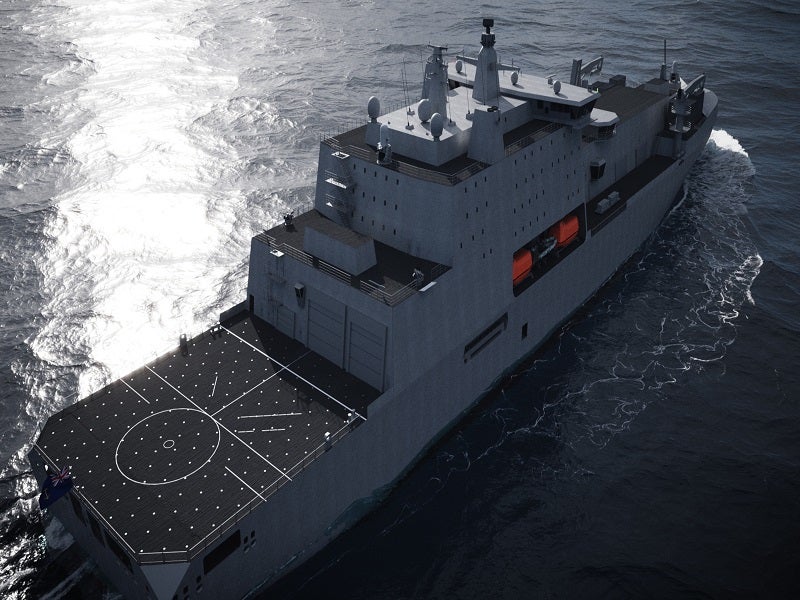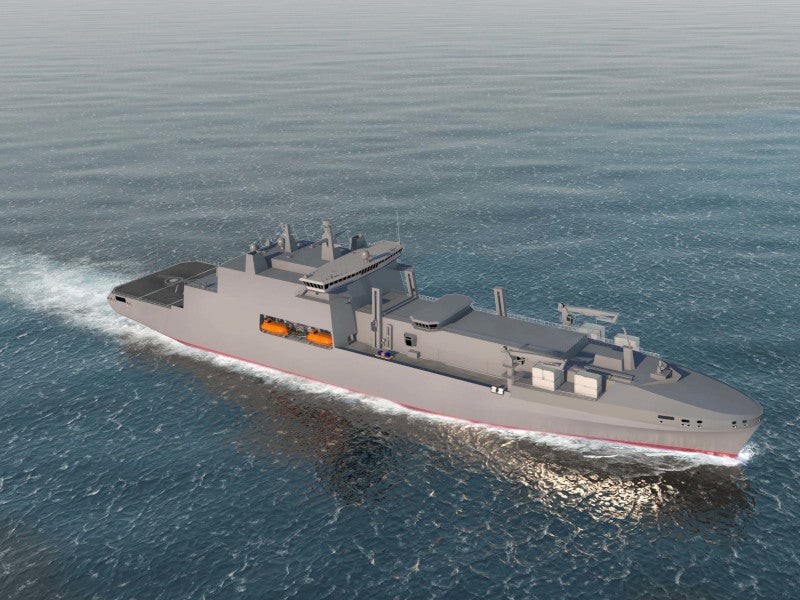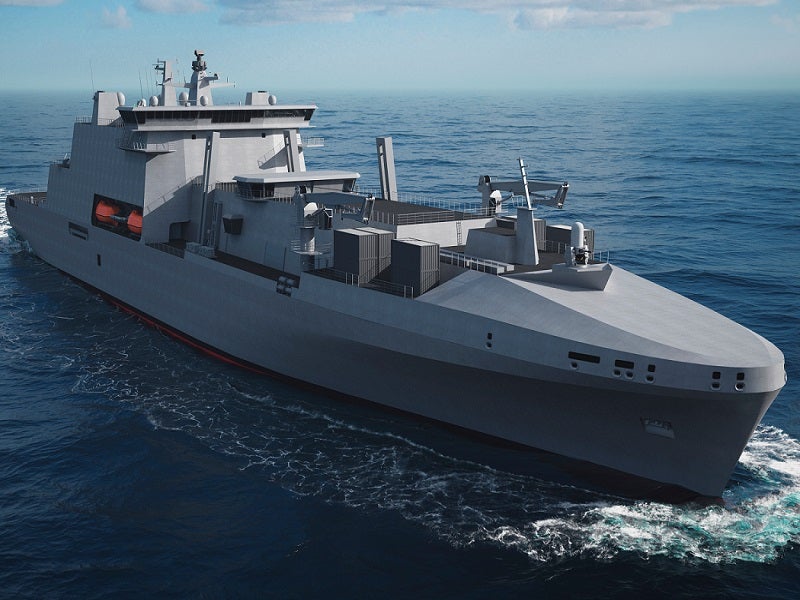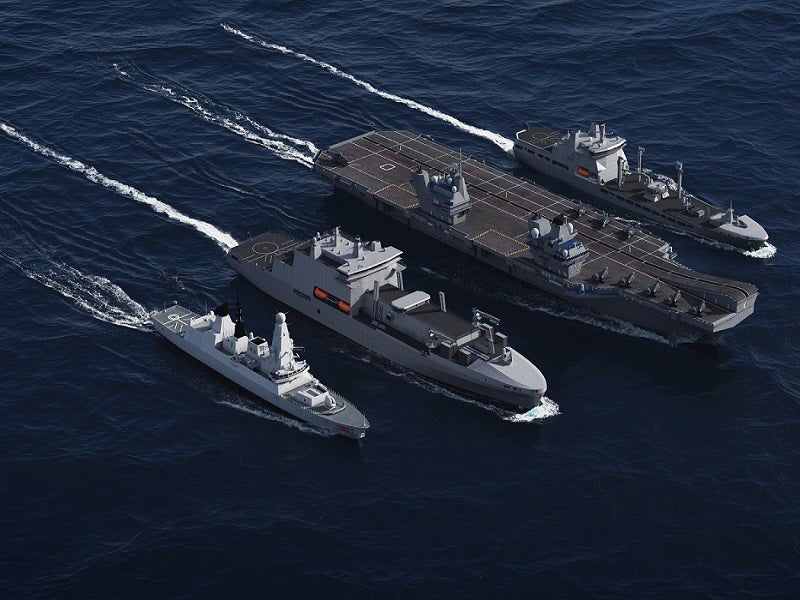The Fleet Solid Support (FSS) ships are designed to supply munitions, stores and provisions to the Royal Navy’s aircraft carriers, destroyers and frigates. They will also offer logistical and operational support, including missions against piracy and terrorism, and will work closely with allies on joint operations.
Team Resolute, comprising the shipbuilders Navantia and Harland & Wolff along with naval architects BMT, will deliver three FFS ships to the Royal Fleet Auxiliary (RFA), a naval auxiliary fleet owned by the UK’s Ministry of Defence (UK MoD).
Construction on the first ship is set to begin in 2025, with all three support ships expected to be operational by 2032.
The new ships will replace the RFA Fort Austin and RFA Fort Rosalie, which were sold to Egypt, and the RFA Fort Victoria, which is set to be decommissioned in 2028.
The FSS programme is in alignment with the goals outlined in the UK government’s national shipbuilding strategy refresh. It is expected to generate 1,200 jobs in UK shipyards and an additional 800 jobs throughout the UK supply chain.
Fleet Solid Support design and features
Each FSS ship will measure 216m in length and 34.5m in width. The ships will have a displacement of 39,000t, a maximum speed of up to 19kt and a range of 11,000nm.
The ship’s design features a full-width integrated bridge and enclosed bridge wings. Three heavy replenishment at sea delivery rigs and stations for solid and liquids reception at sea will be part of the ships.
The vessels will have a storage capacity of 9,000m² (96,875.2ft² ) for supplies and stores and enable centralised replenishment at sea control position. They will feature a flight deck capable of accommodating all helicopters operated by the UK’s armed forces, and its hangar can house two Royal Navy Merlins, along with extra room for current and future drones and unmanned aerial systems.
Capable of accommodating 101 people, the ships will have room for an additional 80 personnel to assist with operations or to accommodate embarked helicopters.
Sustainability features
The vessels are designed to achieve net carbon zero by the end of their 30-year service lives. The design complies with Lloyd’s class, statutory and environmental regulations.
Incorporating energy-efficient technologies to lower power consumption, the vessels will be capable of reducing carbon intensity through the use of low-carbon, non-fossil fuels and upcoming energy alternatives. They will also feature energy storage systems, weather routing systems and hull air lubrication.
Fleet Solid Support ships development and construction
The competition to build three new FSS ships was launched in May 2021.
The UK Ministry of Defence chose Team Resolute as the preferred bidder to construct the ships in November 2022.
In January 2023, Team Resolute was awarded a £1.6bn ($1.95bn) contract to produce the FSS vessels. The team revealed the evolved design for the FSS ship in September 2023.
Most of the ship’s blocks and modules will be built at Harland & Wolff’s facilities in Belfast and Appledore and Navantia’s shipyard in Cadiz, Spain.
All three ships will undergo final assembly exclusively at Harland & Wolff’s shipyard in Belfast.
Radar and navigation systems
The new vessels will feature sensor solutions provider Hensoldt UK’s Quadome Naval 3D air and surface surveillance radar, air traffic management systems, and Kelvin Hughes integrated navigation bridge systems (INBS).
The Quadome 3D air and surface surveillance radar is equipped with the latest software-defined active electronically scanned array technology. It features an integrated identification, friend or foe (IFF) antenna and will be compatible with the HENSOLDT MSSR 2000 IFF interrogator.
The radar offers exceptional value in terms of operational performance, surpassing small target detection and volume tracking, and mission systems interaction capabilities previously only found in more expensive radar systems.
The Quadome radar’s operational benefits include simultaneous 3D air and surface surveillance with various specialist modes of operation. It is user-friendly and easy to maintain, reducing the burden on operators in terms of manpower, training, and skills.
The Kelvin Hughes INBS includes SharpEye naval navigation radars and multifunction displays. The INBS can be tailored to meet specific operational and technical requirements, including redundancy and security options, with a seamless open interface to other ship systems. The multifunction displays simplify access to navigation tasks such as radar, charts, helicopter control and conning display.
Propulsion details
The FSS ships will be equipped with four main engines, twin propellers and shaft lines, and two diesel generators.
They will feature GE Vernova’s SeaPulse active front-end power converters, as well as hybrid electric induction motor generators for power take-off/power take-in, complete with resilient shock mounts, flexible coupling and hosing.
Contractors involved
In January 2023, Team Resolute selected GE Vernova to provide advanced hybrid propulsion technology for three FSS ships. The contract encompasses commissioning, testing, sea trials, certification, and integrated logistics support services to facilitate the seamless integration of hybrid-electric propulsion technology into the FSS ships.
BMT entered into a subcontract with Navantia UK for the FSS vessels in February 2023. It will provide critical design, lifelong support and training packages for the vessels. The contract will encompass a comprehensive through-life support and training package, safety and environmental case reports, and assistance to the UK MoD in securing the ships’ security accreditation.
Navantia UK contracted Hensoldt UK to supply critical systems for the three new FSS ships in May 2024.







